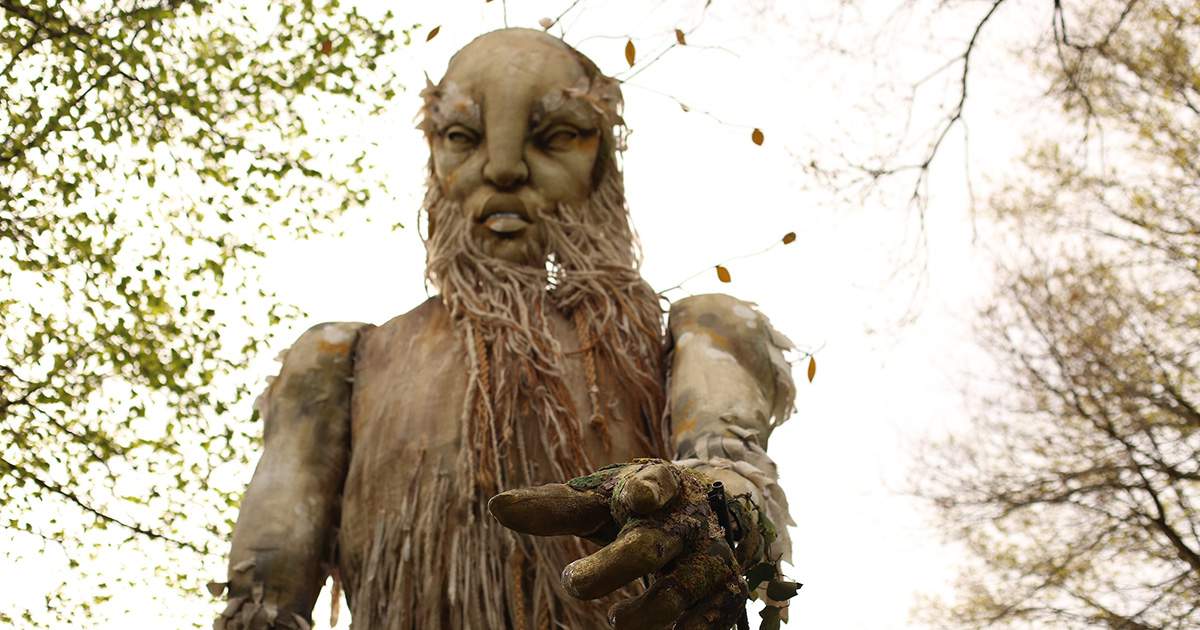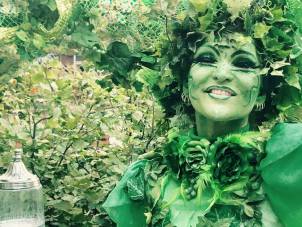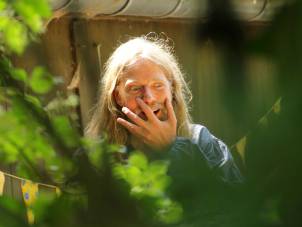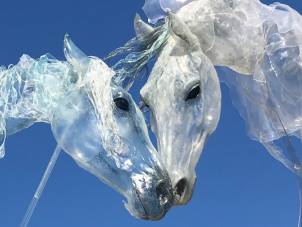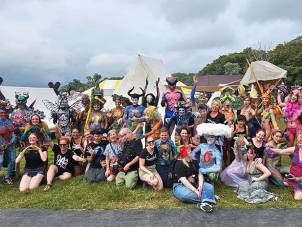Omoloùnkà emerges like a forest spirit awakened from forgotten times. Towering at nearly 5.5 meters tall, he represents the Green Man – a symbol of wild nature, renewal, and the unspoken wisdom carried by trees and roots. His movements are slow and solemn, as if the ground beneath him remembers every footstep.
He is accompanied by the Tunghalik: mysterious figures with carved wooden masks and flowing ritual garments. Their presence is both silent and powerful. Through slow gestures, melodic intonations, and otherworldly motions, they awaken and guide the giant. They do not speak in human language, but communicate through ancient rhythms of movement and sound. Their role is not to perform, but to invoke. As they interact with the crowd, inviting participation, their ritual begins to blur the line between spectator and storyteller.
Omoloùnkà does not act in a conventional sense. He breathes. He listens. His immense frame leans in, responds, and pauses. Amber and moss-green lights ripple across his textured skin. The air around him smells faintly of bark and rain-soaked leaves. The Tunghalik circle him like moons around a silent planet, shaping the moment with invisible threads.
This is not theatre, not a parade. It is a living ritual. A passageway carved from imagination, where myth and reality intertwine. The performance draws the audience into a shared space of wonder, not to tell a story, but to awaken one already buried deep within.
People don’t simply watch Omoloùnkà. They witness something stir – inside the puppet, inside themselves. And as he passes, something remains. A breath. A flicker. A forgotten song carried in the bones. They say where the Green Man walks, something ancient takes root again. And those who meet him do not leave unchanged.
